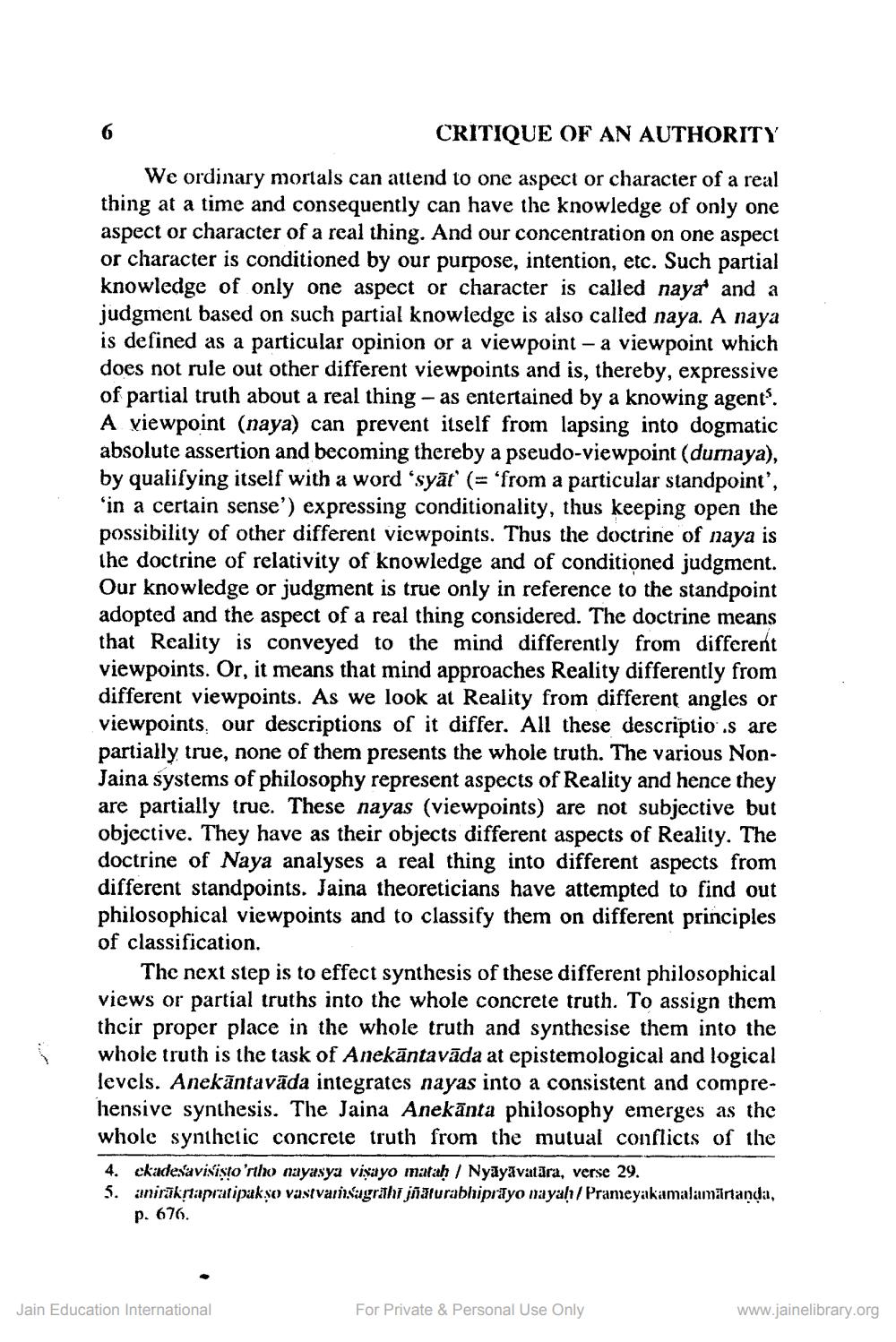Book Title: Aptamimansa Critique of an Authority Bhasya Author(s): Samantbhadracharya, Akalankadev, Nagin J Shah Publisher: Jagruti Dilip Sheth Dr View full book textPage 7
________________ CRITIQUE OF AN AUTHORITY We ordinary mortals can attend to one aspect or character of a real thing at a time and consequently can have the knowledge of only one aspect or character of a real thing. And our concentration on one aspect or character is conditioned by our purpose, intention, etc. Such partial knowledge of only one aspect or character is called naya and a judgment based on such partial knowledge is also called naya. A naya is defined as a particular opinion or a viewpoint - a viewpoint which does not rule out other different viewpoints and is, thereby, expressive of partial truth about a real thing - as entertained by a knowing agent. A viewpoint (naya) can prevent itself from lapsing into dogmatic absolute assertion and becoming thereby a pseudo-viewpoint (durnaya) by qualifying itself with a word 'syāt' (= 'from a particular standpoint', ‘in a certain sense') expressing conditionality, thus keeping open the possibility of other different viewpoints. Thus the doctrine of naya is the doctrine of relativity of knowledge and of conditioned judgment. Our knowledge or judgment is true only in reference to the standpoint adopted and the aspect of a real thing considered. The doctrine means that Reality is conveyed to the mind differently from different viewpoints. Or, it means that mind approaches Reality differently from different viewpoints. As we look at Reality from different angles or viewpoints, our descriptions of it differ. All these descriptio'.s are partially true, none of them presents the whole truth. The various Non Jaina systems of philosophy represent aspects of Reality and hence they are partially true. These nayas (viewpoints) are not subjective but objective. They have as their objects different aspects of Reality. The doctrine of Naya analyses a real thing into different aspects from different standpoints. Jaina theoreticians have attempted to find out philosophical viewpoints and to classify them on different principles of classification. The next step is to effect synthesis of these different philosophical views or partial truths into the whole concrete truth. To assign them their proper place in the whole truth and synthesise them into the whole truth is the task of Anekāntavāda at epistemological and logical levels. Anekāntavāda integrates nayas into a consistent and compre hensive synthesis. The Jaina Anekānta philosophy emerges as the whole synthetic concrete truth from the mutual conflicts of the 4. ckadesavisisto'rtho nayasya viņayo matah/ Nyāyāvatāra, verse 29. 5. anirāk riapratipukso vastvarivsugrahi jñafurabhiprayo nayah/Prameyakamalamärtanda, p. 676. Jain Education International For Private & Personal Use Only www.jainelibrary.orgPage Navigation
1 ... 5 6 7 8 9 10 11 12 13 14 15 16 17 18 19 20 21 22 23 24 25 26 27 28 29 30 31 32 33 34 35 36 37 38 39 40 41 42 43 44 45 46 47 48 49 50 51 52 53 54 55 56 57 58 59 60 61 62 63 64 65 66 67 68 69 70 71 72 ... 140
